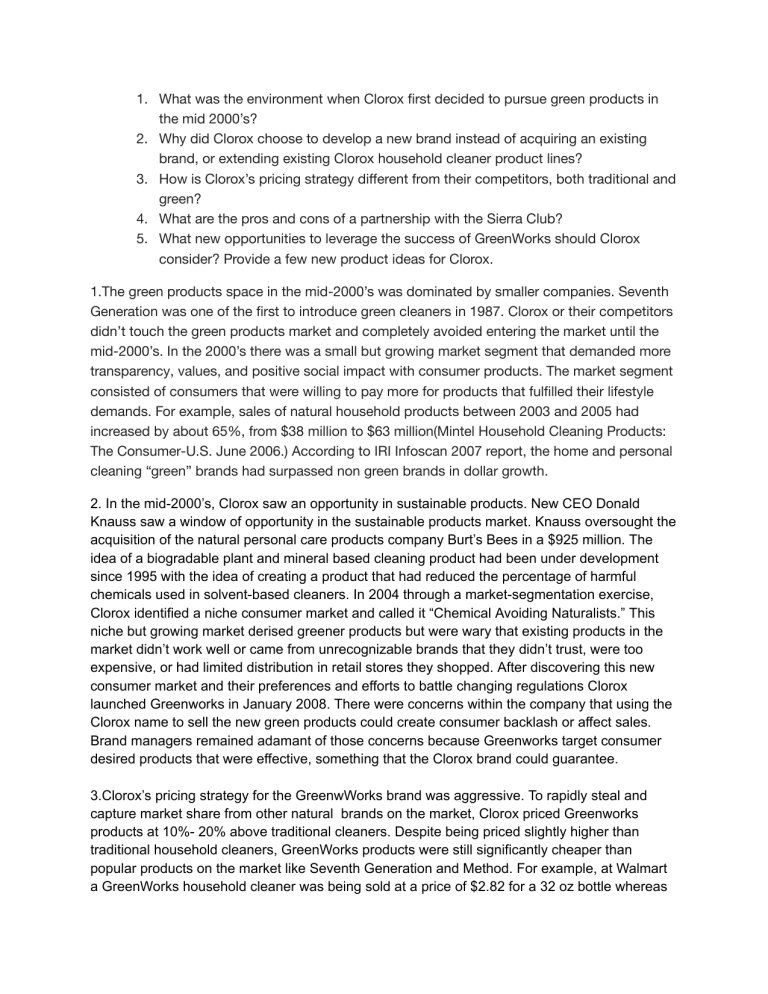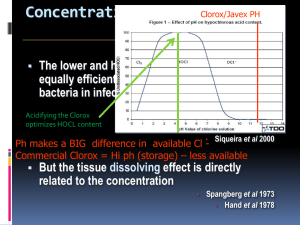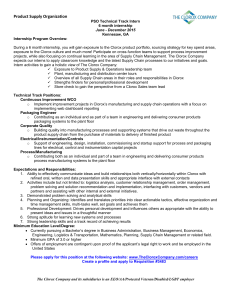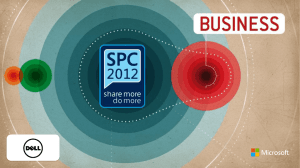Clorox GreenWorks Case Study: Strategy & Market Analysis
advertisement

1. What was the environment when Clorox first decided to pursue green products in the mid 2000’s? 2. Why did Clorox choose to develop a new brand instead of acquiring an existing brand, or extending existing Clorox household cleaner product lines? 3. How is Clorox’s pricing strategy different from their competitors, both traditional and green? 4. What are the pros and cons of a partnership with the Sierra Club? 5. What new opportunities to leverage the success of GreenWorks should Clorox consider? Provide a few new product ideas for Clorox. 1.The green products space in the mid-2000’s was dominated by smaller companies. Seventh Generation was one of the first to introduce green cleaners in 1987. Clorox or their competitors didn’t touch the green products market and completely avoided entering the market until the mid-2000’s. In the 2000’s there was a small but growing market segment that demanded more transparency, values, and positive social impact with consumer products. The market segment consisted of consumers that were willing to pay more for products that fulfilled their lifestyle demands. For example, sales of natural household products between 2003 and 2005 had increased by about 65%, from $38 million to $63 million(Mintel Household Cleaning Products: The Consumer-U.S. June 2006.) According to IRI Infoscan 2007 report, the home and personal cleaning “green” brands had surpassed non green brands in dollar growth. 2. In the mid-2000’s, Clorox saw an opportunity in sustainable products. New CEO Donald Knauss saw a window of opportunity in the sustainable products market. Knauss oversought the acquisition of the natural personal care products company Burt’s Bees in a $925 million. The idea of a biogradable plant and mineral based cleaning product had been under development since 1995 with the idea of creating a product that had reduced the percentage of harmful chemicals used in solvent-based cleaners. In 2004 through a market-segmentation exercise, Clorox identified a niche consumer market and called it “Chemical Avoiding Naturalists.” This niche but growing market derised greener products but were wary that existing products in the market didn’t work well or came from unrecognizable brands that they didn’t trust, were too expensive, or had limited distribution in retail stores they shopped. After discovering this new consumer market and their preferences and efforts to battle changing regulations Clorox launched Greenworks in January 2008. There were concerns within the company that using the Clorox name to sell the new green products could create consumer backlash or affect sales. Brand managers remained adamant of those concerns because Greenworks target consumer desired products that were effective, something that the Clorox brand could guarantee. 3.Clorox’s pricing strategy for the GreenwWorks brand was aggressive. To rapidly steal and capture market share from other natural brands on the market, Clorox priced Greenworks products at 10%- 20% above traditional cleaners. Despite being priced slightly higher than traditional household cleaners, GreenWorks products were still significantly cheaper than popular products on the market like Seventh Generation and Method. For example, at Walmart a GreenWorks household cleaner was being sold at a price of $2.82 for a 32 oz bottle whereas a Method Counter Top cleaner was being sold at $3.99 for a 17 oz bottle and Ecover Ecological Bathroom Cleaner was being sold for $5.50 for a 16.9 oz at natural food stores. When compared by cents per oz the Clorox GreenWorks cleaner was far cheaper at 8.8 cents/oz versus the 24.9 cents/oz for the Method cleaner and 32.5 cents/oz for the Ecover cleaner. The Clorox GreenWorks cleaner was just slightly more expensive or cheaper when compared to conventional cleaners from competitors sold at Walmart. The 409 Multi-Surface Cleaner was being sold at 6.7 cents/oz, the SC Johnson Windex Cleaner was being sold at 9.6 cents/oz, and the P&G Mr. Clean Multi-Surfaces Antibacterial Cleaner was priced at 10.7 cents/oz. 4. Clorox entered a partnership with the Sierra Club to build and change public perceptions of the Clorox brand and promote the newly launched GreenWorks brand. The partnership between a a company that endorses environmentally safe practices and Clorox had some skepticism. However, the partnership was seen as a powerful statement about Clorox’s new found “greenness” image. They sought that the partnership would attract new environmentally conscious consumers who have a poor image of Clorox. The Sierra Club sought to create “good outcomes through win-win situations.”(Orin Corel, spokesperson for the Sierra Club) The new partnership created backlash among environmentalists. A vast majority of Sierra Club memebers viewed Clorox as a major contributor to a bad environment. The Sierra Club’s credibility and reputation was hurt as a result of the partnership. The partnership hurt Sierra Club’s membership recruitment as the organization had trouble recruiting younger members and contribution levels decreased. Clorox on the other hand evaded controversy. 5. Clorox could leverage the success of the GreenWorks brand by taking new initiatives to contribute to a greener more sustainable future. Clorox should invest in research and development to find new household cleaning product formulas that are more environmentally sound and also pose reduced risk to consumers. Clorox should take an initiative to create a products that provide more benefits just then “greenness” they say to provide. For example, they could donate money from sales of their GreenWorks products to sustainable causes such as planting new trees, or carbon capture causes. They should also develop products that are made from compostable materials. One product, i propose is the creation of a bamboo based toilet paper, since bamboo grows at a faster rate than trees. They should provide evidence to consumers that their products are sustainably sound by allowing a third-party investigation company test their products.





